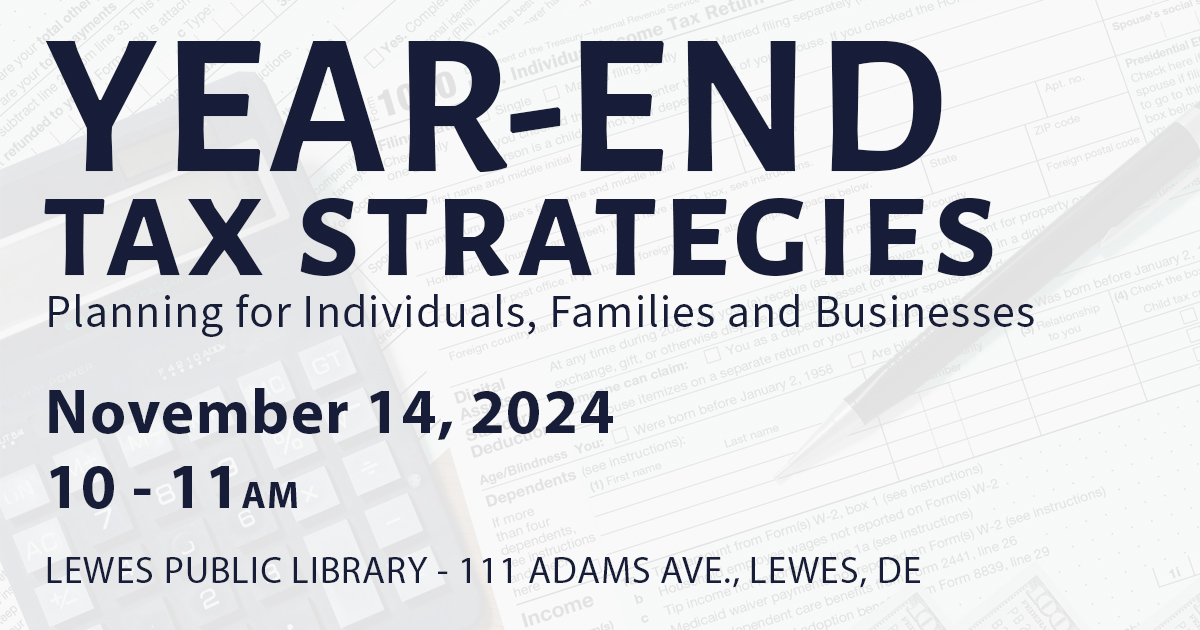Summer isn’t just for barbeques and baseball. It’s also a good time to think about ways to cut your 2023 business tax bill. Here are four planning ideas for small business owners to consider, assuming there won’t be any changes to current federal tax laws at least through 2024.
1. Establish a Tax-Favored Retirement Plan
If your business doesn’t already have a retirement plan, now might be the time to take the plunge. Current rules allow for significant annual deductible contributions. For example, if you’re self-employed, you can set up a simplified employee pension (SEP) plan for yourself. Then you can contribute up to 20% of your net self-employment income, with a maximum contribution of $66,000 for your 2023 tax year. If you’re employed by your own corporation, you can contribute up to 25% of your salary, with a maximum contribution of $66,000.
Besides SEPs, other small business retirement plan choices include:
- 401(k) plans,
- Defined benefit pension plans, and
- Savings Incentive Match Plan for Employees (SIMPLE) IRAs.
The optimal choice depends on your circumstances. For instance, a SIMPLE IRA can be a good choice if your business income is modest. If you have plenty of discretionary cash to put away for retirement, non-SEP plans may allow bigger deductible contributions.
Important: When setting up a retirement plan, be aware that if your business has employees, you may have to cover them, too.
In many cases, you can still establish a plan and make a deductible contribution for 2022. The general deadline for setting up a tax-favored retirement plan, such as a SEP or 401(k) plan, is the extended due date for the return for the year you or your business entity want to make the initial deductible contribution.
For instance, if you extended your 2022 personal tax return and operate a sole proprietorship or single-member LLC that’s treated as a sole proprietorship for federal tax purposes, you have until October 16, 2023, to establish a plan and make the initial deductible contribution.
There’s a critical exception, however. To make a SIMPLE IRA contribution for the 2022 tax year, you must have set up the plan by October 1, 2022. So, if the SIMPLE IRA option is appealing, establish the plan and make the initial contribution by October 1, 2023.
2. Take Advantage of Generous Depreciation Tax Breaks
Current federal income tax rules allow generous first-year depreciation write-offs for eligible assets that are placed in service during your business’s current tax year. To take advantage of favorable federal income tax depreciation rules, consider making eligible asset acquisitions between now and year end.
Here’s an overview of applicable depreciation rules and the planning opportunities they might provide for your business:
Section 179 deductions. For qualifying property placed in service in tax years beginning in 2023, the maximum allowable first-year Sec. 179 deduction is $1.16 million. (See “Which Purchases Are Eligible for Sec. 179 Deductions?” at right.)
Sec. 179 deductions can’t cause an overall business tax loss, and deductions are phased out if too much qualifying property is placed in service in the tax year. Also, the Sec. 179 deduction limitation rules can be tricky if you own an interest in a pass-through business entity, such as a partnership, limited liability company (LLC) treated as a partnership for tax purposes or S corporation.
First-year bonus depreciation. For qualified new and used property that’s placed in service in calendar year 2023, 80% first-year bonus depreciation is available (down from 100% for 2022). Before taking advantage of 80% first-year bonus depreciation, however, you should generally write off as much as you can with Sec. 179 deductions.
Depreciation deductions for heavy SUVs, pickups and vans. Favorable federal income tax depreciation rules apply to new and used heavy vehicles used over 50% for business. For tax purposes, these vehicles are considered transportation equipment that qualifies for Sec. 179 deductions and 80% first-year bonus depreciation. To qualify for this favorable treatment, the vehicle must have a manufacturer’s gross vehicle weight rating above 6,000 pounds.
Depreciation deductions for cars, light SUVs, light trucks and light vans. For these vehicles that are used over 50% for business, special luxury auto depreciation limitations apply. Thankfully, the limitations aren’t that strict. For passenger autos placed in service in 2023, the maximum luxury auto depreciation deductions are:
- $20,200 for year 1 if bonus depreciation is claimed ($12,200 if bonus depreciation isn’t claimed),
- $19,500 for year 2,
- $11,700 for year 3, and
- $6,960 for year 4 and thereafter until the vehicle is fully depreciated.
For vehicles acquired and placed in service in 2023, the $12,200 first-year luxury auto depreciation limit applies only to vehicles that cost $61,000 or more. If first-year bonus depreciation of $8,000 is claimed, the $20,200 first-year luxury auto depreciation limit applies only to vehicles that cost $69,000 or more.
3. Time Business Income and Deductions for Tax Savings
If you conduct your business using a pass-through entity, your shares of the business’s income and deductions are passed through to you and taxed at your personal rates. Pass-through entities include:
- Sole proprietorships,
- S corporations,
- LLCs, and
- Partnerships.
Assuming no legislative changes, next year’s individual federal income tax rates will be the same as this year’s. Plus, there will likely be significant inflation adjustments to the rate bracket thresholds.
The traditional strategy of deferring income into next year while accelerating deductible expenditures into this year makes sense if you expect to be in the same or lower tax bracket next year. This strategy will, at a minimum, postpone part of your tax bill from 2023 until 2024. And, after the inflation adjustments to 2024 rate bracket thresholds, the deferred income might be taxed at a lower rate.
On the other hand, if you expect to be in a higher tax bracket in 2024, take the opposite approach. That way, more income will be taxed at this year’s lower rate instead of next year’s higher rate.
4. Maximize the QBI Deduction
The deduction based on qualified business income (QBI) from pass-through entities was a key element of the Tax Cuts and Jobs Act. For tax years through 2025, the deduction can be up to 20% of a pass-through entity owner’s QBI. This break is subject to restrictions that can apply:
- At higher business income levels, and
- Based on the owner’s taxable income.
The QBI deduction is only available to individuals, including pass-through entity owners, trusts and estates. It can also be claimed for up to 20% of income from qualified real estate investment trust dividends and 20% of qualified income from publicly traded partnerships.
Because of the limitations on the QBI deduction, tax planning decisions may increase or decrease your allowable QBI deduction. For example, claiming big first-year depreciation deductions can reduce QBI and lower your allowable QBI deduction. So, if you can benefit from the deduction, be careful making tax planning moves. Your tax advisor can help you put together strategies that give you the best overall tax results.
Consult Your Tax Pro
Fortunately, no major tax law changes are expected this year. This article covers just the tip of the tax planning iceberg for small businesses. Contact your tax advisor to discuss mid-year planning strategies to determine the right course of action based on your situation.
PKS & Company, P. A. is a full service accounting firm with offices in Salisbury, Ocean City and Lewes that provides traditional accounting services as well as specialized services in the areas of retirement plan audits and administration, medical practice consulting, estate and trust services, fraud and forensic services and payroll services and offers financial planning and investments through PKS Investment Advisors, LLC.
© Copyright 2023. All rights reserved.
Brought to you by: PKS & Company, P.A.





